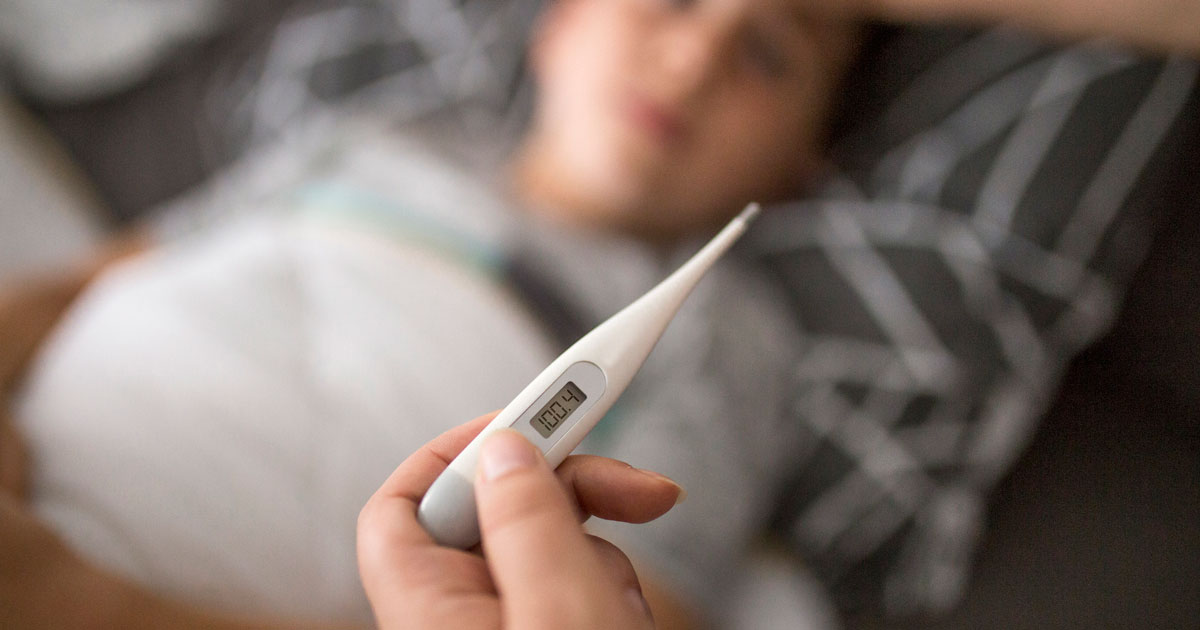Fevers 101: How to treat them, and when to get help

A fever is your immune system's way of changing the battleground to help itself fight. When your body recognizes an invader (like bacteria or a virus), your immune system raises your body temperature as a defense. Your immune system works much better in hotter temperatures, while invaders do worse. Fevers may feel terrible to you, but they help your body destroy invaders and get back to its healthy self.
Fevers defined
Normal body temperatures sit between 97 to 99° F. A fever is a temperature of 100.4° F or higher. There are low-grade fevers and more serious fevers, depending on the sick person's age.
A serious fever is hotter than:
• 100.4° F in infants younger than one month – go to the ER if this happens
• 102° F in infants older than one month on up to children
• 103° F in adults
For infants one month and younger, a temperature of 100.4° F or higher requires immediate medical attention. From one month of age and older, most fevers – even serious fevers – do not require immediate medical attention. If your feverish child is making eye contact, responding to your voice, drinking fluids and voiding normally, there's no need to worry.
When to get medical attention
Most fevers don’t require medical attention. However, any of these symptoms in children or adults, along with a fever, means it's time to see a doctor. Download the Nebraska Medicine mobile app or schedule online to make an appointment, or call 800.922.000.
| Children | Adult |
|---|---|
| Seizure | Seizure |
| Listless | Severe headache |
| Inconsolably irritable | Stiff neck |
| Stops drinking | Sensitivity to light |
| Stops voiding | Mental confusion |
| Persistent vomiting | Persistent vomiting |
| Has a fever lasting longer than 3 days | Difficulty breathing |
| Chest pain or shortness of breath | |
| Pain when urinating |
In general, fevers don't cause harm. Even febrile seizures – convulsion in a child caused by a spike in body temperature – rarely cause any lasting damage. However, the infection triggering the fever certainly can cause long-lasting damage. For example, meningitis can cause very sudden high fevers. Meningitis can cause brain injuries or even death. That's why it's important to monitor the symptoms associated with the fever to see if you need medical help.
Which thermometer reading is best
- Mouth: The best choice for home use. Oral readings are accurate and easy to take. Placing an oral thermometer in the armpit is less accurate (and will be about 1 degree lower than a mouth reading)
- Rectal: Highly accurate, but there's a risk of injury, especially with infants. Best to leave rectal thermometers to health care professionals
- Forehead: Used for their convenience and speed, no-touch forehead thermometers are the least accurate
Home treatments for fevers
You don't have to treat a fever, especially if it's lower than the more serious fevers (listed above in Fevers defined).
A fever is part of your normal immune response. Lowering your body temperature with medication can limit your immune system's fighting power. However, if you or your child's symptoms are intolerable, these medications effectively treat a fever:
- Children one to six months old: acetaminophen
- Children six months or older: acetaminophen or ibuprofen
- Adults: acetaminophen, ibuprofen and any other over-the-counter NSAID medications
Other at-home remedies can make you feel more comfortable and help with accompanying symptoms:
- Decreasing ambient room temperature
- Using a fan
- Fewer blankets on bed
- Soothing honey or lemon teas
- Cold beverages for sore throat
- Humidifier for cough
Above all, stay hydrated and get plenty of rest. A fever is one of the symptoms of COVID-19. Be sure to get tested for COVID-19 before returning to work or other public places.






